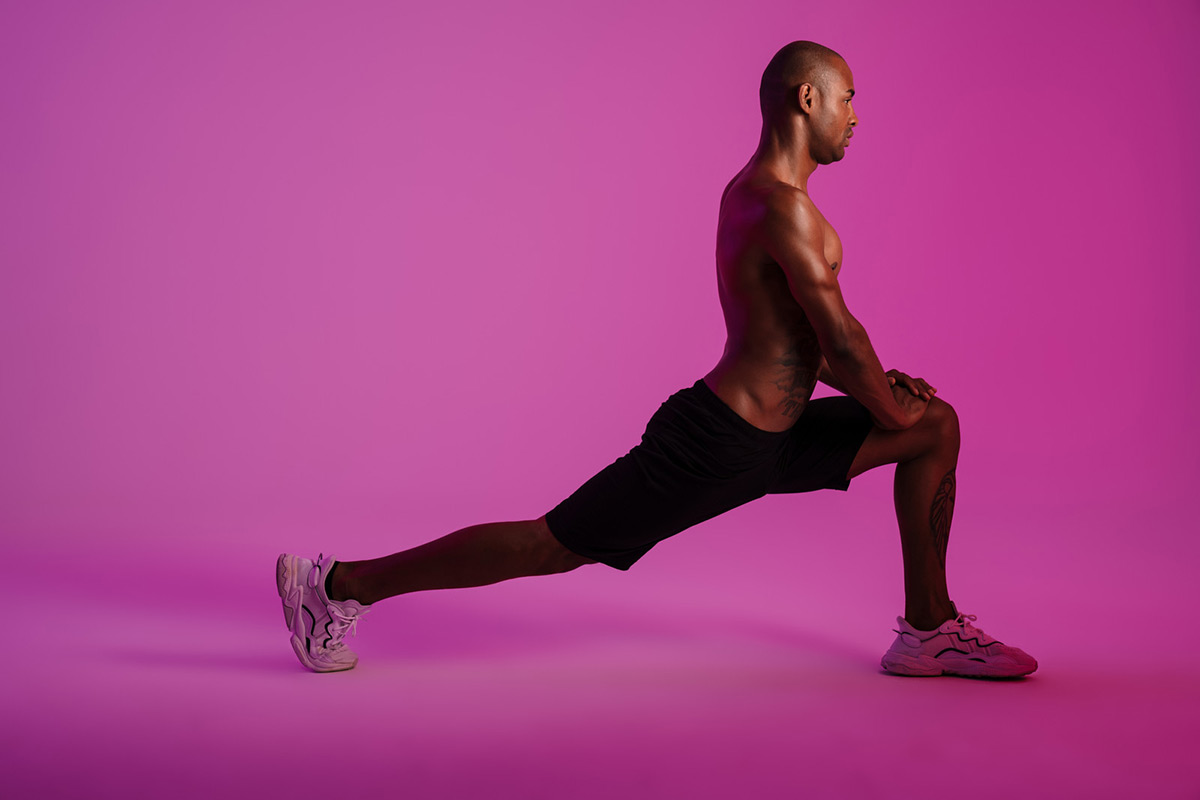Table of contents
Do you envy people who are so flexible they can wrap their legs around their head? It’s impressive to watch, but few people are born with joints that flexible or can develop that degree of flexibility. Don’t feel bad if you can’t do it!
What does it mean to be flexible? Flexibility refers to the range-of-motion of a joint and it depends on how much give the tissues that surround the joints have, such as the ligaments, tendons and cartilage. If they’re stiff and unyielding, the joints will move less freely.

© Can Stock Photo / deandrobot
A certain degree of flexibility is beneficial, but more isn’t always better. In fact, there’s a medical condition called Ehlers-Danlos where muscles are so flexible that it’s a liability. People with this condition develop problems such as joint dislocations and joint pain.
You may have wondered why some people are much more flexible than others. Here are five factors that determine how flexible you are.
5 Factors that Determine your flexibility
Age
You were probably a lot more flexible when you were a child than you are now, and you’ll continue to lose flexibility. Research shows that flexibility declines by about 5% with each decade of life. That’s one reason the career of a gymnast has a limited lifespan; they lose some of the flexibility that made them excel at their sport.
How does the loss of flexibility occur? As people age, connective tissue replaces some of the muscle fibers and the connective tissue becomes harder and stiffer over time, a process called fibrosis. By the time a person reaches late middle-age, there may have accumulated quite a bit of fibrosis.
Gender
In terms of being flexible, women are at an advantage. Studies show women are more flexible than men. Why the difference? Experts believe hormones are a factor.
Women have higher levels of the female hormone estrogen and this gives them a flexibility advantage. Some anatomical differences also increase flexibility in females as opposed to males. So if you value flexibility, being female has an advantage.
Genetics
Some people are blessed with genetics that makes them more flexible. The reason has to do with differences in anatomy and how the joint is constructed. That’s one reason you see more ballerinas and gymnasts in certain families. As with many traits, there’s a certain degree of inheritability of flexibility.
Joint Structure
A joint’s structure also determines how flexible it is. A joint is made up of two bones and the space between them, and the joint is surrounded by tendons and ligaments that provide additional support. The structure of a bone plays some role in how flexible it is and how much resistance there is to movement, as does the elasticity of the tendons and ligaments that cover the joint.
Tendon and muscle injuries can lead to scarring and this restricts the degree to which a joint can move. The flexibility of a joint also varies with the temperature inside the joint. That’s why it’s important to warm up before launching into a workout. You want your muscles and joints to be flexible.
Activity Level
It should come as no surprise that active people are more flexible than those who sit around a lot. In fact, sitting is one of the worst things you can do if your goal is to be more flexible. When you sit for hours at a time, your hip flexors shorten and tighten. Think about how stiff you feel when you stand after sitting too long.
Your muscles and tissues contracted and tightened during the time you were sitting. The only way to loosen them up is to walk around and stretch. Tight, contracted muscles, especially in the hips, increase the risk of back pain and strains and even affect your posture.
If you sit, take breaks every 20 minutes to stretch and walk up and down the hall. Add hip flexor stretches to your daily routine to lengthen those short, tight muscles.
Can Stretching Increase Flexibility?
Many people hope to improve their flexibility by stretching and engaging in activities like yoga that lengthen the muscles. Stretching can improve how much a muscle can lengthen, but it doesn’t happen in the way most people think. You might envision stretching making a muscle permanently longer, much like stretching a piece of elastic makes it a little longer.
However, stretching only lengthens a muscle for a short time, from a few minutes to several hours. The muscle eventually returns to its previous length.
Does that make stretching worthless? Nope. One reason muscles lengthen after stretching is the muscles you stretched becomes more tolerant of being lengthened. Your nervous system is out to protect you from injury. If it senses you’re stretching a muscle too far, it clamps down and forces the muscle to not stretch further.
But if you stretch regularly, your nervous system becomes more comfortable with the muscle being lengthened and “gives” a little more so the muscle can lengthen to a greater degree. The key is to be consistent about it. You can’t stretch once a month and expect to become more flexible.
The Bottom Line
Now you know why some people are more flexible than others. Even if you lack the flexibility of a gymnast or ballerina, regular stretching can modestly improve how flexible you are. Plus, every time you get out of that chair to stretch, you’re breaking the cycle of sitting and doing something good for your health.
References:
- Front Physiol. 2018; 9: 1834.Published online 2019 Jan 15. doi: 10.3389/fphys.2018.01834.
- MedicalNewsToday.com. “How do you strengthen hip flexors?”
- Clin Biomech (Bristol, Avon). Nov;20(9):973-83. 2005.
